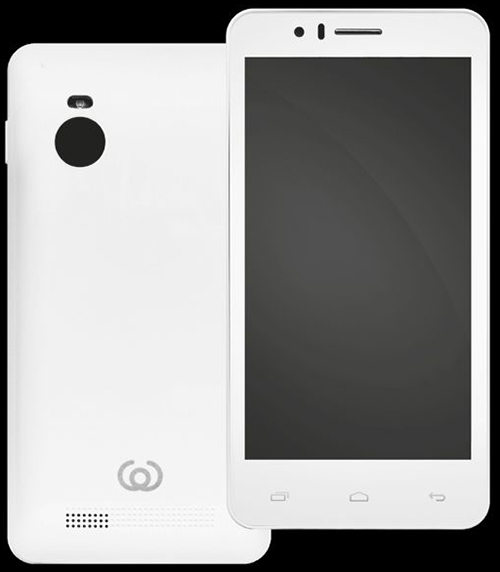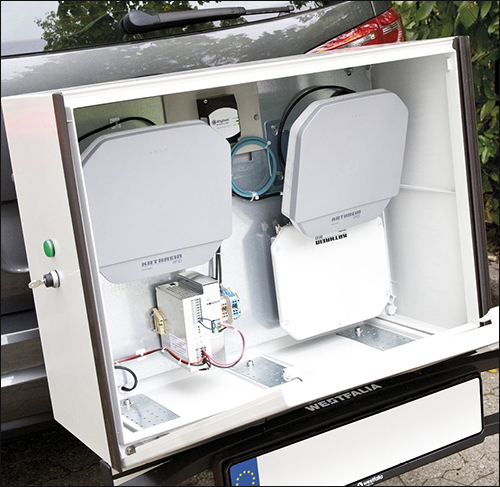Dec 17, 2015The following are news announcements made during the past week by the following organizations:
Kurt Salmon, Tyco Retail Solutions;
Fujitsu;
Invengo;
Schreiner Services;
IDTronic;
Stanley Healthcare; and
Kaba Lodging.
Kurt Salmon, Tyco Retail Solutions Showcase 1:1 Retailing Experience
Tyco Retail Solutions and management consulting firm Kurt Salmon have partnered to develop a connected and personalized shopping experience, known as 1:1 Retailing, and are offering live demonstrations of this at Tyco's U.K. Customer Innovation Center. According to the two companies, 1:1 Retailing delivers an enhanced personalized shopping experience in-store, and the live demos are designed to help retailers view and understand the potential that 1:1 Retailing holds for their business.
Visitors to Kurt Salmon's concept store have the opportunity to explore shopping that combines social, mobile, online and in-store experiences from both the perspectives of both a customer and a sales associate, says Sarah Davis, Kurt Salmon UK's head of digital. The concept store features a variety of technologies, she says, including social media, window display screens, customer apps, sales apps, interactive product displays, mannequins equipped with Bluetooth beacons, and smart fitting rooms. The customer and sales associate technology showcased in the concept store has all been developed by Kurt Salmon Digital and leverages Kurt Salmon's 1:1 Retailing approach, while inventory accuracy is managed by Tyco's TrueVUE RFID-based inventory-visibility and -management platform.
Tyco's RFID-based TrueVUE combined with Kurt Salmon's 1:1 Retailing platform enable retailers to capture in-store behavior, send product recommendations and other marketing information, and offer customers the option of requesting in-store assistance. The RFID tags on the products allow the in-store technology to know what is happening with a specific item, according to Davis, including where the product is located within the store and key details about that item. Furthermore, as RFID-tagged merchandise is brought into fitting rooms, a customer can request additional sizes and products.
The in-store demonstration area includes a fully set up athleisure-themed concept store, a store back room, and a security and inventory control room area. Additionally, Davis says, there are conference rooms for workshops designed to help visitors determine how to adapt the 1:1 Retailing connected-consumer principles to benefit their business.
Fujitsu Introduces Bluetooth Smart Beacon for IoT Solutions
Fujitsu Components America, a subsidiary of Fujitsu, has introduced a battery-powered Bluetooth Smart beacon designed to be paired with existing or OEM-developed Internet of Things (IoT) applications and other custom features, in order to provide a complete, wireless beacon solution. The beacon is suitable for indoor navigation at train stations, airports and exhibition halls, the company reports, as well as logistics management, health care, retail couponing, and point-of-presence for museums and expos.
The Fujitsu FWM8BLZ02 is a broadcast-only beacon with a 20-meter (65.6-foot) transmission range, and is powered by a CR2450 coin-cell battery, with a battery life of up to two years. According to Fujitsu Components America, customers can use the unit's text-based, over-the-air configuration mode to load existing protocols, such as iBeacon and Eddystone, or to define and change custom protocols, operating parameters and advertising data. It features an LED indicator to visually distinguish between normal operation, configuration and recovery modes, in order to help prevent errant initialization.
The beacon, made with Fujitsu's MBH7BLZ02 Bluetooth Smart module, is packaged in a plastic case measuring 40 millimeters by 31 millimeters by 12 millimeters (1.6 inches by 1.2 inches by 0.5 inch), and weighs 10 grams (0.4 ounce). Sample application source codes for iOS and Android operating systems are available to enable practical demonstrations, the company reports. The beacon is FCC-, IC- and CE-certified and meets the Bluetooth v4.1 specification. Samples are available now, according to Fujitsu, with general availability expected in January 2016.
Invengo Releases Mobile Phone UHF RAIN RFID Reader
Invengo Technology has announced the availability of its ultrahigh-frequency (UHF) XC-1003 mobile phone RAIN RFID reader, which the company says is suitable for Internet of Things (IoT) environments and retail, asset-management, health-care and event-management applications.
Invengo described the new mobile phone reader in October 2015 (see RFID News Roundup: Invengo Technology Announces New Channel Partner Program), when it discussed its new global channel partner program designed to promote the company's RAIN passive UHF RFID tags, inlays, readers and antennas to a global ecosystem of strategic partners.
The XC-1003 features a RAIN RFID embedded reader that supports the EPCglobal Gen 2 and ISO 18000-6C specifications, an Android 4.4 OS, a 1.2 GHz dual-core processor, 1 GB of RAM, 4 GB of ROM, a 5-inch color touchscreen display, and support for WLAN, Bluetooth 4.0, GPS and Wi-Fi technologies. It also features a flash-supported camera. The device measures 152 millimeters by 85 millimeters by 12 millimeters (6 inches by 3.3 inches by 0.5 inch) and weighs 230 grams (8.1 ounces). The phone comes with two SIM slots, one for GSM cellular service (850/900/1800/1900 MHz), the other for WCDMA (900/2100 MHz).
Schreiner Services Rolls Out RFID-enabled Road-Maintenance Solution
Schreiner Services has announced a new system designed to be installed on a car or other motor vehicle, in order to read UHF RFID transponders embedded in roadways.
The transponders are integrated into nonwoven geotextile fabric provided by Provlies, an Austrian company that specializes in providing solutions for the construction and maintenance of roads.
Provlies' material has elasticity that, when it is fitted into cracked roads, helps delay future damage, according to Schreiner Services. Ultrahigh-frequency (UHF) RFID tags integrated into the material are embedded at least 4 centimeters (1.6 inches) under the asphalt or concrete surface and offer the road-maintenance provider continuous, contactless communication with the road network. The tags are linked with software applications, such as digital maps, automatic traffic count, construction journals, sewer network maps and weather information. In addition, software modules for condition assessment, construction or construction supervision can be integrated with the tags.
When mounted on a vehicle, Schreiner Services' solution can read the tags' recorded data at speeds of up to 60 kilometers per hour (37.3 miles per hour), the company reports, so that communities and road-maintenance companies can access relevant operational data without major effort. The information is read via several antennas and readers supplied by Kathrein RFID that fit into a weather-resistant box mounted to a vehicle's trailer hitch. The data that the reader collects is radio-transmitted to a computer inside the vehicle, Schreiner Services explains. The collected information offers road-maintenance service providers a detailed overview of the road's condition, thereby helping to increase the reconstructed roads' service life. According to Schreiner Services, this helps to reduce costs and guarantees sustainable road construction.
In 2012, Provlies (then known as Polyfilld) unveiled an older version of its RFID-enabled material that could be read using high-frequency (HF) RFID interrogators installed on the back of vehicles as they pass by at a speed of about 40 kilometers (25 miles) per hour (see Polyfilld's RFID Solution Helps Roads Talk to Inspectors).
IDTronic Intros Solution for Race Timing and Event Management
IDTronic has introduced a new ultrahigh-frequency (UHF) RFID solution for race timing and event management, as well as industrial asset tracking. The solution combines Times 7's Slimline RTAS linear-polarized mat antenna combined with IDTronic's Bluebox Advant LR reader.
The Slimline RTAS has a rugged dust- and water-resistant molded polyurethane housing with an IP 66 rating, enabling the antenna to be installed on the ground, withstand road traffic and operate in all weather conditions. It has an ultra-low profile, measuring 1,220 millimeters by 600 millimeters by 12 millimeters (4 feet by 2 feet by 0.5 inch) and weighing 8.4 kilograms (18.5 pounds).
The Slimline RTAS antenna is designed to be portable and easily set up, the company reports, and has an interconnecting system enabling customers to connect as many as seven antennas together, end to end. It features integrated cable channels to protect and hide the cables (all of which are included), with each mat antenna having 2 meters (6.6 feet) of clear cable free for the reader connection. The Advant LR reader has four antenna ports and supports the FCC UHF frequency band (902 to 928 MHz), as well as the ETSI UHF frequency (865 to 867 MHz). Its rugged IP67 aluminum housing provides reliable protection and resistance to environmental influences, the company says.
Lakes Region General Hospital Deploys Hugs Infant-Protection Solution
Stanley Healthcare has announced that its Hugs Wi-Fi Infant Protection solution with its Kisses Mother/Infant Matching feature, has been deployed at Lakes Region General Hospital (LRGH), in New Hampshire.
The Hugs Infant Protection System is a tracking solution enabling hospitals to locate tags on babies, as well as identify when those tags may be leaving an authorized area, or come into contact with the wrong mother. It leverages a hospital's existing Wi-Fi network.
The Hugs solution protects newborn infants against the risk of abduction not only in LRGH's Family Birthplace section, but anywhere throughout the hospital covered by Wi-Fi, according to Stanley Healthcare. The facility's Family Birthplace provides care to mothers, babies and families, and contains eight suites that are arranged to allow for a mother to labor, deliver and recover in one room without separating the child from the family. It expects to deliver 325 babies this year.
Each infant wears a tiny Hugs battery-powered Wi-Fi RFID tag on his or her ankle that is attached via a special tamper-detecting band, offering multiple layers of security, including exit protection, tamper detection (to alert personnel to the tag's unauthorized removal) and continual supervision, as well as alerts in the event that the child is detected in an unauthorized area of the hospital. Employees can access the information from in-room PCs or any browser-enabled Microsoft Windows device, enabling personnel to complete procedures more efficiently and with less disruption to patients. System activity can also be monitored on any Windows device with network access, with alerts pushed to workers via Apple iPhone or iPod mobile digital devices, IP phones, Vocera badges, text messaging and e-mail.
In addition, Stanley Healthcare says, LRGH is using the Kisses component of the Hugs solution to provide automatic and audible matching of infants and mothers. Each mother is given a Kisses Wi-Fi RFID tag, which is bonded with her infant's Hugs tag; whenever the two are brought together anywhere within the hospital, the tag checks for a proper match.
Gaylord Palms Installs Kaba Networked RFID Door Locks
Kaba Lodging, which provides Saflok and ILCO electronic locks, has announced that it has implemented an integrated solution of its RFID-enabled electronic door locks at the The Gaylord Palms Resort & Convention Center. The resort converted to Kaba's Saflok MT RFID electronic door locks, the firm reports, which interface with the resort's property-management and energy-management systems, and the networked Saflok solution provides property security and guest convenience.
According to Kaba, Gaylord Palms wanted online networked locks that interface with its Inncom by Honeywell thermostats and Inncom property network. During the implementation, Kaba's installation team converted 1,406 guest door locks in seven days and secured 400,000 square feet of meeting space with Saflok RFID electronic locks. Kaba has declined to provide any specific details regarding the RFID hardware used, citing security reasons.





